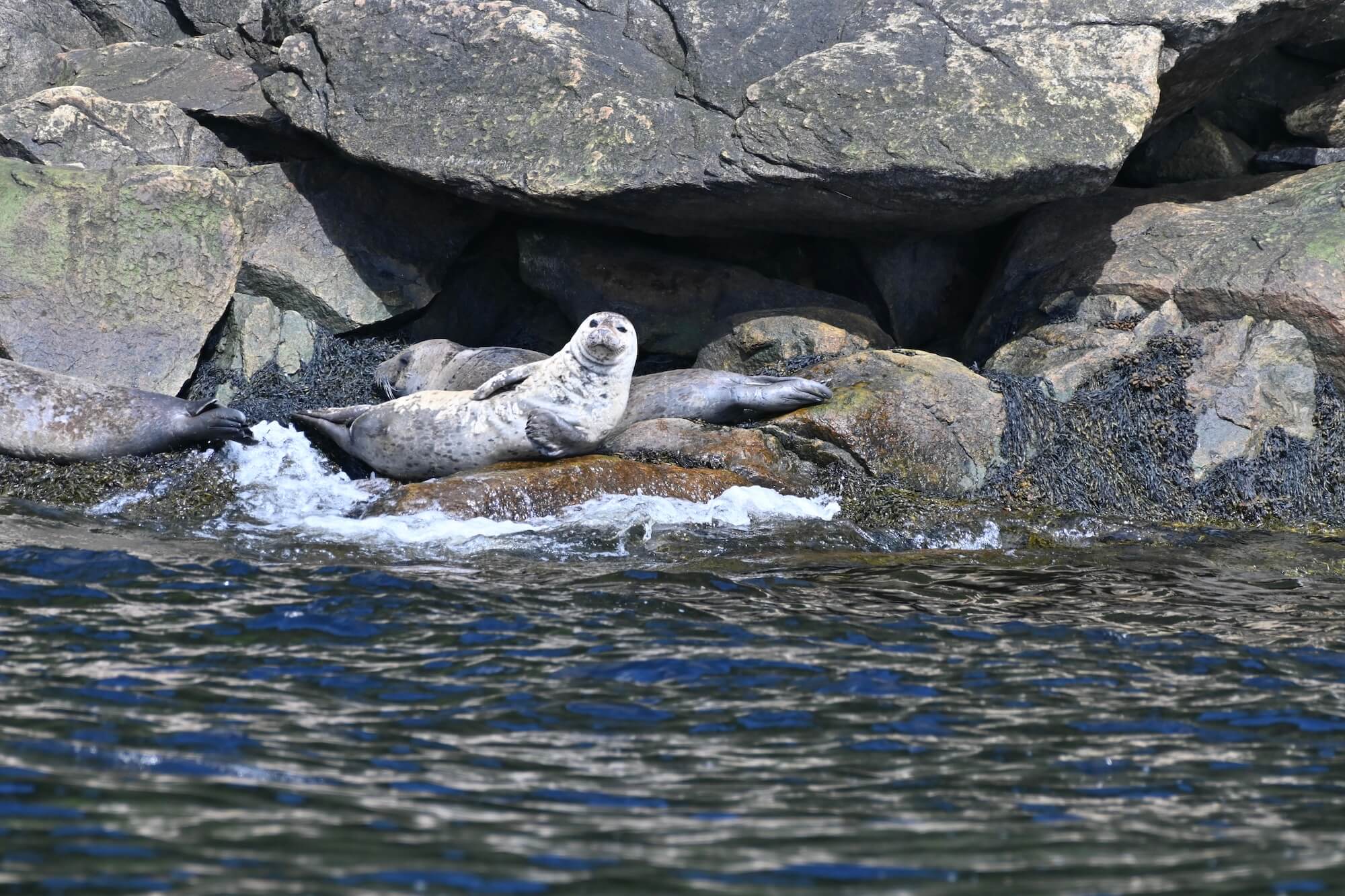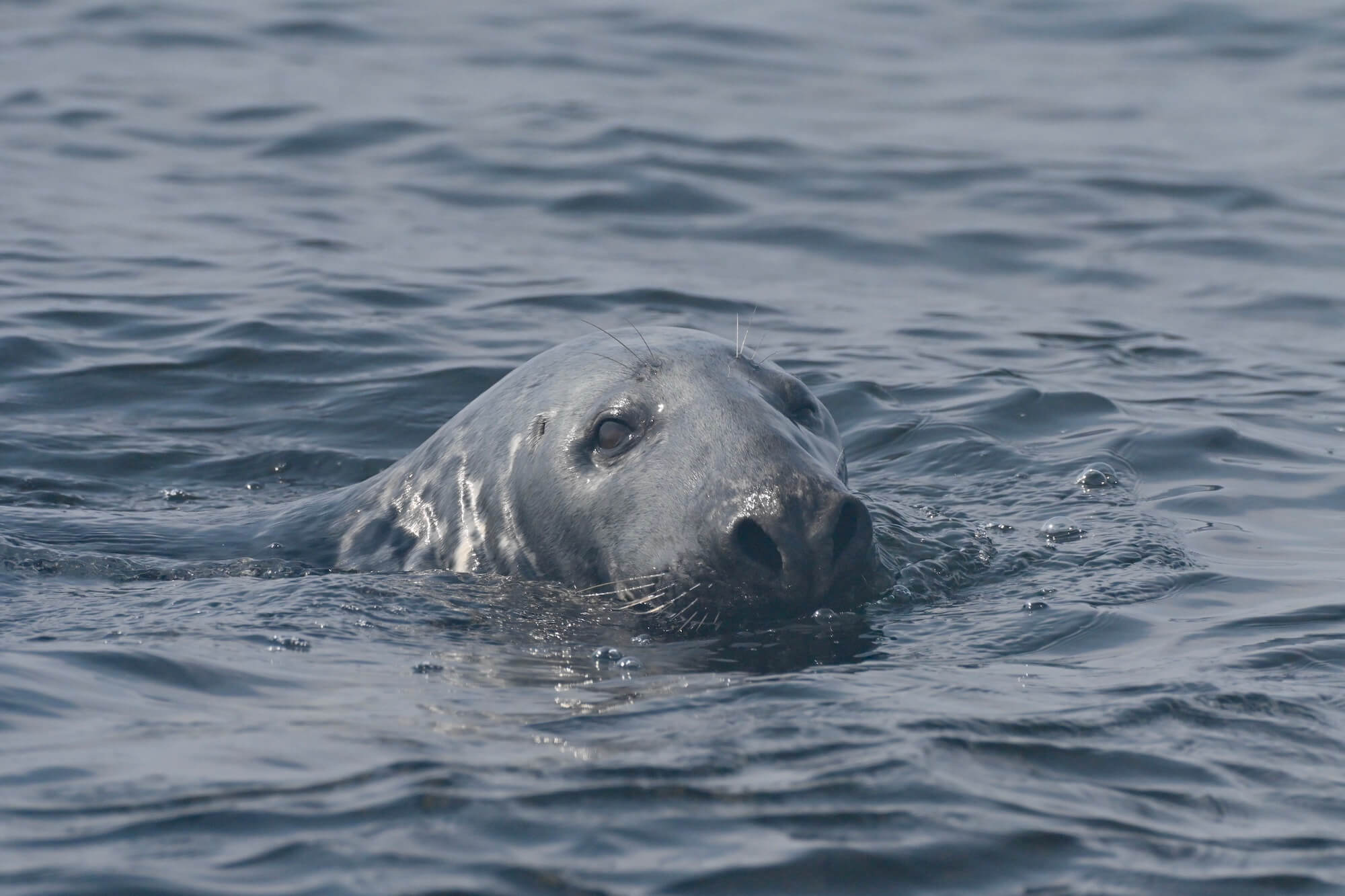Just like the top athletes at the Olympic Games in Paris, cetaceans also hold a number of records! From blue whales to white-sided dolphins, belugas to humpbacks, let’s sift through last week’s whale sightings through their head-turning performances.
Acrobatics
Many whales perform acrobatics, each more impressive than the last. While the reasons behind some of their manoeuvres may not be entirely clear, others are simply… for feeding!
At the Baie-Comeau marina, minke whales continue to perform, putting their ventral grooves and pectoral fins on display. In Les Escoumins, a naturalist also has the chance to see an individual in full breach. From the Mingan Archipelago to Saint-Siméon, not to mention Gaspé Bay, minke whales are definitely everywhere and don’t hesitate to make themselves noticed by approaching the coast.
Harbour porpoises are also making their presence known across the St. Lawrence, their small dorsal fins slicing through the water. New arrivals, white-sided dolphins, have been spotted in the gulf! Two groups of 6 to 8 individuals have been seen in Gaspé Bay, and the species has also been reported in the Mingan sector.
The greatest giant of all
The largest living animal on Earth, the blue whale, has been observed in Gaspésie and is reported to have even shown its caudal fin on a few occasions! One individual was also spotted in the estuary by a mariner while the latter was on the water for the Mingan Island Cetacean Study. It was the animal’s powerful blast in an otherwise calm sea that allowed the observer to spot it from afar.
The top podium for gigantism, however, is held by Perucetus colossus, an enormous cetacean that roamed the seas over 40 million years ago. By studying its skeleton, paleontologists estimate that it must have weighed between 85 and 340 tonnes. The largest blue whales are 190 tonnes, which means that Perucetus might have been far bigger!
Speed records
Several fin whales were seen during the week. One of them was passing in front of Saint-Siméon, another was swimming near Les Escoumins, two fin whales were in the Gulf, and one individual was spotted in Gaspé Bay.
Certainly one of the fastest of the large cetaceans; it’s no wonder this species is nicknamed the “greyhound of the seas”! Their hydrodynamic morphology and propulsive force help these large swimmers reach top speeds of up to 40 km/h when feeding. Fin whales even practise synchronized swimming!
Multipurpose pectorals
More than eight humpbacks are currently visiting the Marine Park, while two individuals are present in Gaspé Bay. In a competition, humpback whales would certainly stand out for their oversized pectoral fins. They improve manoeuvrability, enhance thermoregulation and are used for feeding as well as fighting. One humpback whale even made an incursion into the Olympic Games (article in French)!
Whether it’s speed, prowess or other world records, whales are definitely true athletes of the oceans!
Where are the whales this week? Observation map
These data were reported by our network of observers. They give an idea of the presence of whales and in no way represent the actual distribution of whales in the St. Lawrence. Just for fun!
Click on the whale or seal icons to discover the species, the number of individuals, additional information or photos of the sighting. To enlarge the map, click on the icon in the top right-hand corner. The map works well on Chrome and Firefox, but not so well on Safari.
To display the list of sightings, click on the icon in the top left-hand corner.
Thanks to all our collaborators!
Special thanks go out to all our observers who share their love for marine mammals with us! Your encounters with cetaceans and pinnipeds are always a pleasure to read and discover.
On the water or from shore, it is your eyes that give life to this column.
Marie-Andrée Charleboix
Clara Comeau
Thalia Cohen-Bacry
Laetitia Desbordes
Louis-Pierre Ducharme-Tremblay
Pierre-Soleil Dion
Ninon Lambs
Jade-Audrey Lavergne
Yael Medav
Diane Ostiguy
Chloé Pazart
Renaud Pintiaux
Pascal Pitre
Jean Roy
René Roy
Guillaume Savard
Andréanne Sylvain
Jacques Van Der Elst
Marielle Vanasse
Additionally, we would like to acknowledge the following teams that also share their sightings:
Sept-Îles Research and Education Centre (CERSI)
Group for Research and Education on Marine Mammals (GREMM)
Marine Mammal Observation Network (MMON)
Quebec Marine Mammal Emergency Response Network (QMMERN)
Mingan Island Cetacean Study (MICS)
Would you also like to share your observations?
Have you seen any marine mammals in the St. Lawrence? Whether it’s a spout offshore or just a couple of seals, drop us a line and send your photos to [email protected]!














